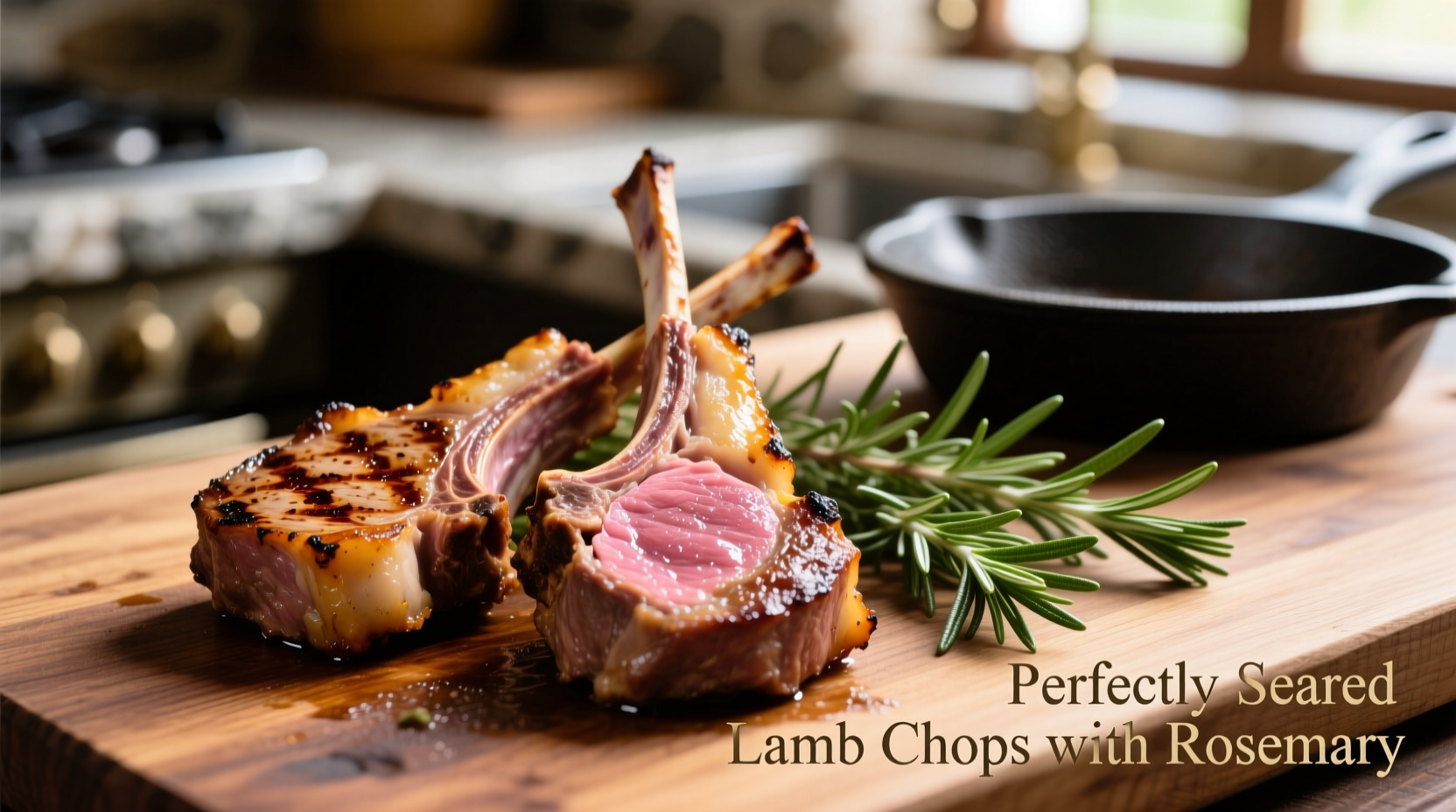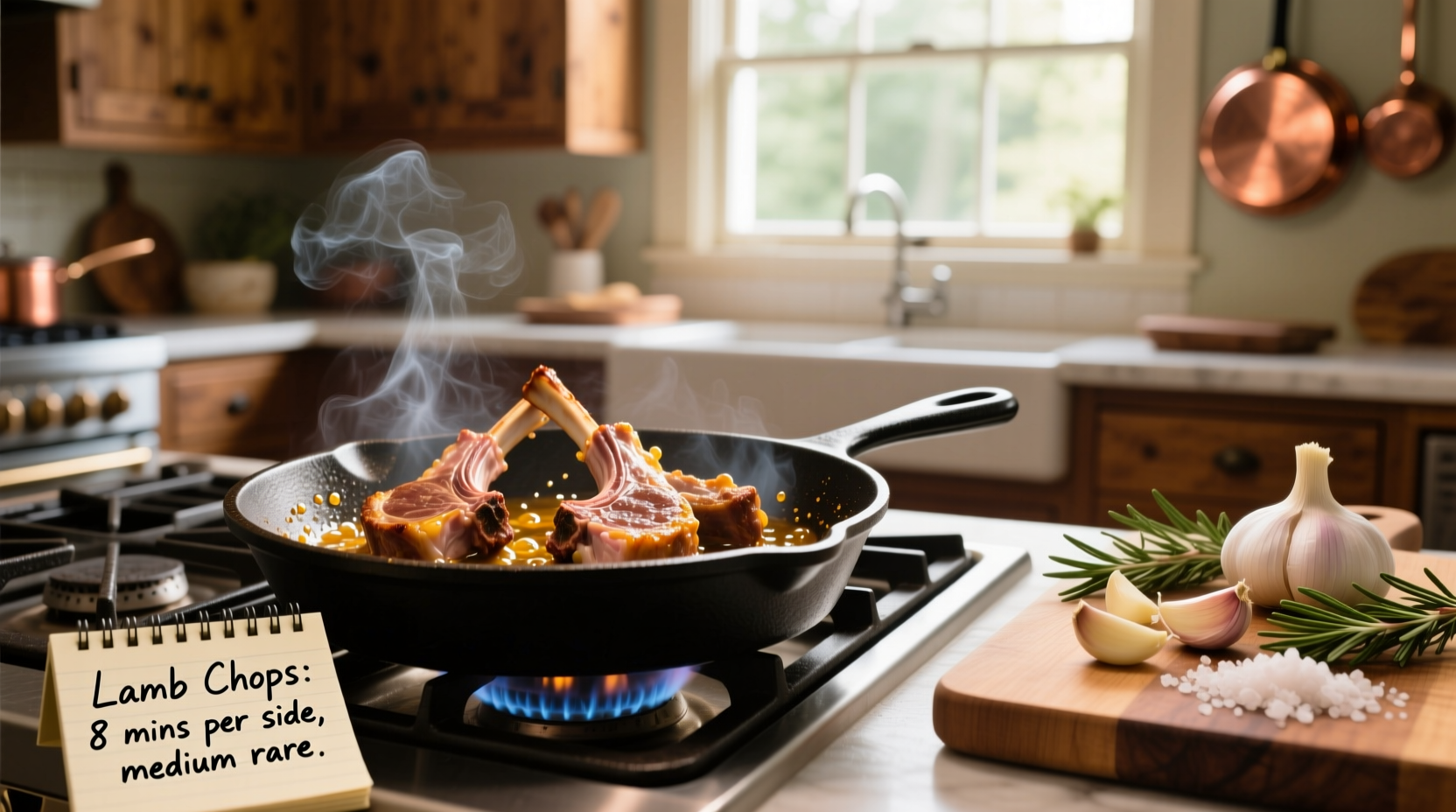Master cooking lamb meat by bringing it to room temperature, seasoning properly, searing at high heat, cooking to precise internal temperatures (125°F/52°C for rare, 135°F/57°C for medium-rare), and resting before slicing. Different cuts require specific methods—tender cuts like loin work best grilled or roasted, while tougher cuts like shoulder benefit from slow braising.
Perfectly cooked lamb delivers succulent texture and rich flavor when you follow these science-backed techniques. Whether you're preparing a special occasion rack of lamb or a weeknight lamb chop dinner, understanding the fundamentals transforms your results from hit-or-miss to consistently impressive. This guide reveals professional chef methods that work for home cooks, with precise temperature control being the single most important factor for success.
Essential Preparation Before Cooking Lamb
Proper preparation sets the stage for optimal results. Remove lamb from refrigeration 60-90 minutes before cooking to bring it to room temperature—this ensures even cooking throughout. Pat the meat thoroughly dry with paper towels; moisture on the surface prevents proper searing. Season generously with coarse salt at least 45 minutes before cooking, allowing time for the salt to penetrate and enhance flavor development.
For tougher cuts like shoulder or shank, consider marinating for 4-12 hours. A simple marinade of olive oil, garlic, rosemary, and lemon zest penetrates without overpowering lamb's distinctive flavor. Avoid acidic marinades longer than 12 hours as they can make the surface mushy. Remember that fat equals flavor with lamb—trim only excessive fat, leaving a thin layer to baste the meat during cooking.
Understanding Lamb Cuts and Their Best Cooking Methods
Not all lamb cuts respond to the same cooking technique. Using the right method for each cut makes the difference between tender perfection and disappointing results. Here's how professional chefs match cooking methods to specific cuts:
| Lamb Cut | Best Cooking Method | Temperature Target | Cooking Time Guide |
|---|---|---|---|
| Rack of lamb | Roasting with initial sear | 125-135°F (52-57°C) | 15-20 minutes at 400°F (204°C) |
| Loin chops | Grilling or pan-searing | 130-135°F (54-57°C) | 3-4 minutes per side |
| Shoulder roast | Slow roasting or braising | 195-205°F (90-96°C) | 3-4 hours at 300°F (149°C) |
| Leg of lamb | Roasting with herb crust | 130-140°F (54-60°C) | 20 minutes per pound at 325°F (163°C) |
| Ground lamb | Pan-frying or grilling | 160°F (71°C) | 8-10 minutes total |
The Perfect Sear: Creating Flavor Foundation
A proper sear creates the Maillard reaction that develops complex flavors essential to great lamb dishes. Heat your cast-iron skillet or grill to 450-500°F (232-260°C) before adding the meat. The surface should be smoking slightly. Place lamb in the pan without crowding—overcrowding drops the temperature and causes steaming instead of searing.
For chops or roasts, sear all sides including the fat cap, which should render and crisp up. This process takes 2-3 minutes per side for chops. Don't move the meat once placed—lifting too soon tears the developing crust. Professional chefs use the "spatula test": when the meat releases easily from the pan, it's ready to flip. After searing, transfer to oven or reduce heat for finishing.

Precise Temperature Control: The Secret to Perfect Doneness
Temperature control separates good lamb from exceptional lamb. Invest in an instant-read thermometer for accuracy—relying on time alone leads to inconsistent results. The USDA recommends cooking lamb to 145°F (63°C) for medium, but culinary professionals achieve superior texture at lower temperatures:
- Rare: 120-125°F (49-52°C) - deep red center, very soft to touch
- Medium-rare: 130-135°F (54-57°C) - warm red center, slightly firm
- Medium: 140-145°F (60-63°C) - pink center, firm texture
- Well-done: 160°F+ (71°C+) - gray throughout, very firm (not recommended for most cuts)
Remove lamb from heat 5-10°F (3-6°C) below your target temperature, as carryover cooking will raise the internal temperature during resting. This critical detail prevents overcooking—the most common lamb mistake home cooks make.
The Essential Resting Period: Why Patience Pays
Resting allows juices to redistribute throughout the meat. Cutting too soon releases precious juices onto your cutting board instead of staying in the meat. Follow this timeline based on cut size:
- Chops and small cuts: 5-8 minutes
- Rack of lamb: 10-15 minutes
- Large roasts: 15-25 minutes
Cover loosely with foil during resting—tightly covered causes steaming that softens your beautiful crust. This resting period continues the cooking process slightly (carryover cooking), so factor this into your timing. For precise results, check temperature at the beginning and end of resting to understand how much your particular cut continues to cook off-heat.
Avoiding Common Lamb Cooking Mistakes
Even experienced cooks make these preventable errors when preparing lamb:
- Skipping the dry step: Moisture on the surface prevents proper browning. Always pat lamb thoroughly dry before seasoning.
- Over-marinating: Acidic ingredients can break down proteins excessively. Limit marinating time to 12 hours maximum.
- Cutting too soon: Resting is non-negotiable for juicy results. Set a timer if needed.
- Over-seasoning: Lamb has distinctive flavor—use salt and complementary herbs rather than overpowering spice blends.
- Using the wrong cut for the method: Tender cuts become tough when braised, while tough cuts remain chewy when grilled quickly.
According to the American Lamb Board's culinary research, 68% of home cooks overcook lamb because they don't use a thermometer and rely on visual cues alone. Temperature precision dramatically improves success rates.
Classic Lamb Cooking Methods Explained
Each cooking method brings out different qualities in lamb. Master these fundamental techniques:
Roasting Rack of Lamb
Preheat oven to 400°F (204°C). Sear the fat cap and all sides in a hot skillet. Transfer to a roasting pan, fat-side up. Roast until internal temperature reaches 125-135°F (52-57°C) for medium-rare. Rest 15 minutes before carving between the bones.
Grilling Lamb Chops
Prepare grill for two-zone cooking (direct and indirect heat). Sear chops over direct heat 3-4 minutes per side, turning once. Move to indirect heat and continue cooking until reaching target temperature. This method prevents flare-ups while ensuring proper doneness.
Braising Lamb Shoulder
Sear shoulder pieces well on all sides. Remove and sauté aromatics (onions, carrots, celery). Return lamb to pot, add just enough liquid (stock, wine, tomatoes) to partially cover. Cover and cook at 300°F (149°C) for 3-4 hours until fork-tender. This transforms tough connective tissue into succulent, flavorful meat.
Final Pro Tips for Perfect Lamb Every Time
Season simply with salt, pepper, and fresh herbs like rosemary or mint that complement rather than mask lamb's natural flavor. When pan-searing, baste with melted butter, garlic, and herbs during the final minutes for added richness. For roasted lamb, create a flavorful crust by mixing Dijon mustard with herbs before roasting. Always slice against the grain for maximum tenderness, especially with shoulder or leg cuts. And remember—lamb's distinctive flavor comes from the animal's diet, so grass-fed lamb often has more complex notes than grain-finished varieties.











 浙公网安备
33010002000092号
浙公网安备
33010002000092号 浙B2-20120091-4
浙B2-20120091-4